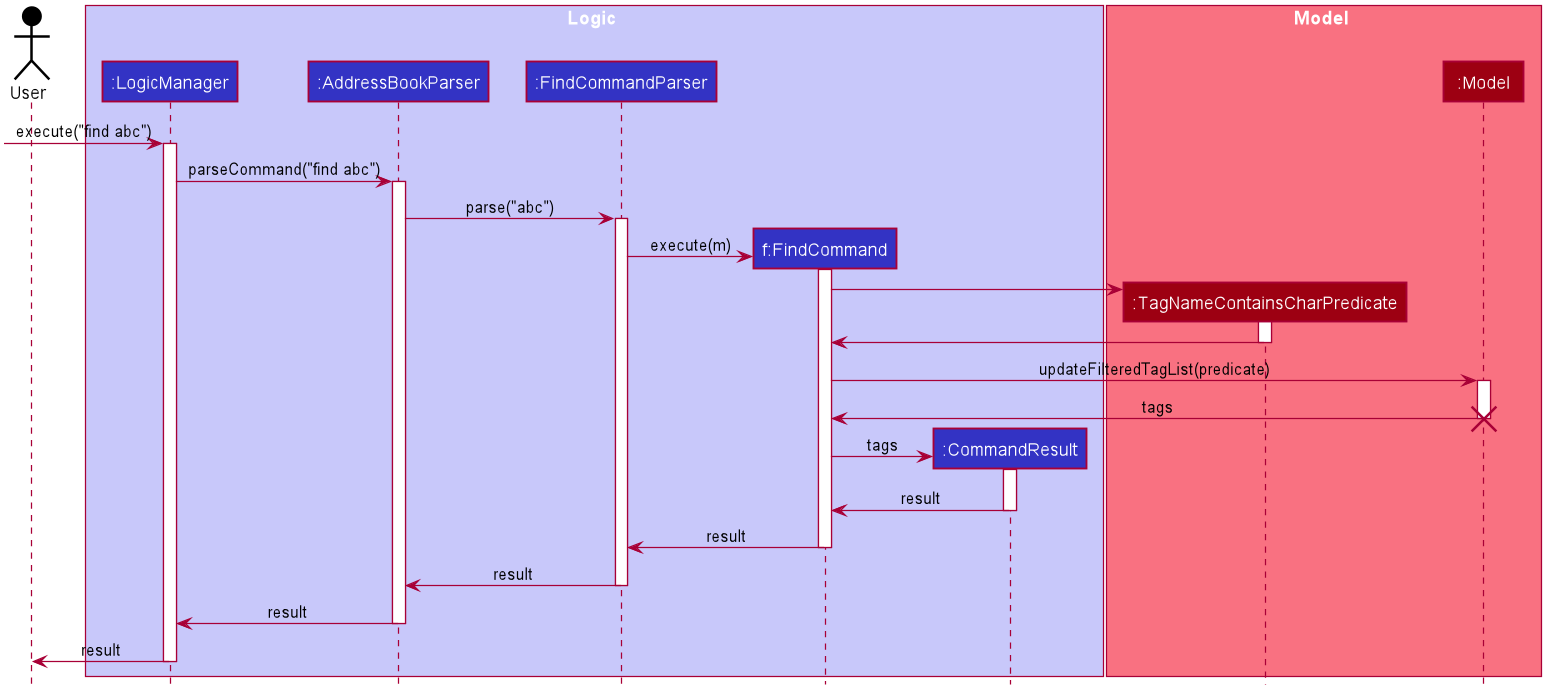Heinrich's Project Portfolio Page
Project: HelloFile
HelloFile is a file management application created as an extension to AddressBook - Level 3 (AB3), specifically made for tech savvy CS2103T CS students. By using HelloFile, students can tag frequently used files/folders with a short nickname, and open their files with intuitive commands.
Given below are my contributions to the project.
- New Feature: Create the model of the app, by including
Tag,Label,FileAddress, andCurrentPathclass. (Pull request #81)- What it does: allows developers to have a strong architecture to continue the app development.
- Justification: This feature improves the product significantly because these models are the keys to the continuation of the app.
- Highlights: This enhancement affects the current AddressBook Level 3 at that point. So a lot of modification and refactoring were made on that period.
- Credits: This enhancement was developed upon the AddressBook Level 3 model class, with some classes being modified and some class being removed.
-
Code contributed: RepoSense link
- Project management:
- Keep track of the milestone’s deadline on each iteration.
- Enhancements to existing features:
- Documentation:
- User Guide (UG):
- Developer Guide(DG):
- Community:
Contributions to the User Guide (Extract)
4.8 Finding a tag : find
Finds a tag by its keyword (can be tag name and/or label).
Format: find KEYWORD
Examples:
find notes
7. Glossary
| Terminology | Definition |
|---|---|
| CLI | Command Line Interface is a command line program that accepts text input to execute operating system functions |
| GUI | Graphical User Interface is a form of user interface that allows users to interact with electronic devices through graphical icons, instead of text-based user interfaces. |
| Absolute path | The complete address of a file location. Usually, the address consists of the root element and the complete directory list required to locate the file Example: C:\Users\a.txt (Windows), /home/usr/b.txt (Linux)). |
| Relative path | The partial address of a file location. Usually, the address does not consist root element. Example: ./Users/Files/a.txt, |
Contributions to the Developer Guide (Extract)
User stories
Priorities: High (must have) - * * *, Medium (nice to have) - * *, Low (unlikely to have) - *
| Priority | As a … | I want to … | So that I can… |
|---|---|---|---|
* * * |
Student with lots of file | tag my files with a easy to remember tag | get file path |
* * * |
First time user | use a help command | start to remember how to use the command |
* * * |
Student who prefers to type | use typing to interact with my file system | use keyboard as much as possible |
* * * |
Student who is familiar with command line applications | name my files | access the file easily next time |
* * * |
CS student with many categories of files | categorise my files and folders | easily manage my files and search files based on categories |
* * * |
First time user | use help command | start to remember how to use the command |
* * * |
Student with lots of files | see a list of my tags | find the tag that I created easily |
* * * |
Developer | open files with a quick command | focus on coding and not look to find my files |
* * |
CS student with a lot of project | hide private contact details | minimize chance of someone else seeing them by accident |
| Priority | As a … | I want to … | So that I can… |
|---|---|---|---|
* * |
Command line user | use commands similar to Linux | use the similar Linux command without having to relearn |
* |
Forgetful user who always forget where his files are located | tag frequently used files with a easy to remember tag | locate my files easily |
* |
Intermediate user | delete file | not be distracted by it. |
Find a specific tag: FindCommand
…(after some description)
This is the sequence diagram of the FindCommand.
